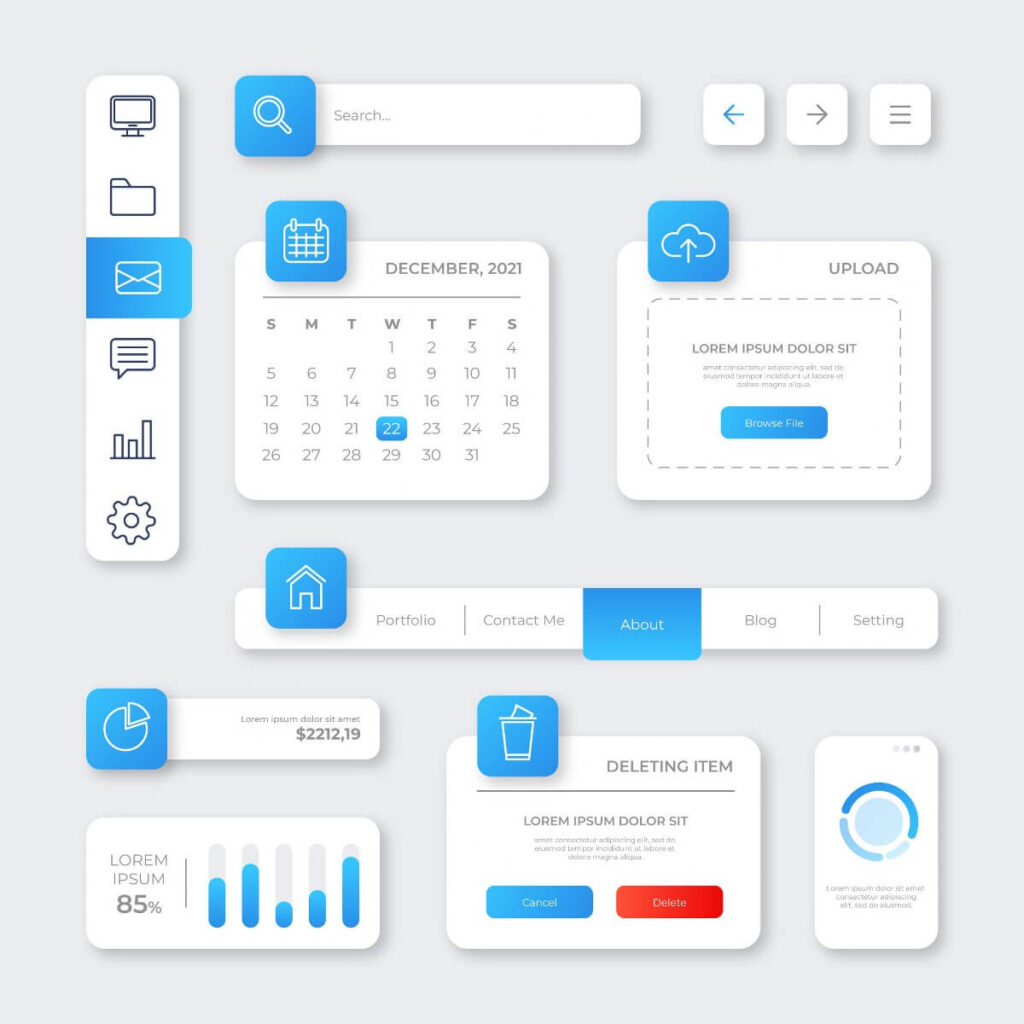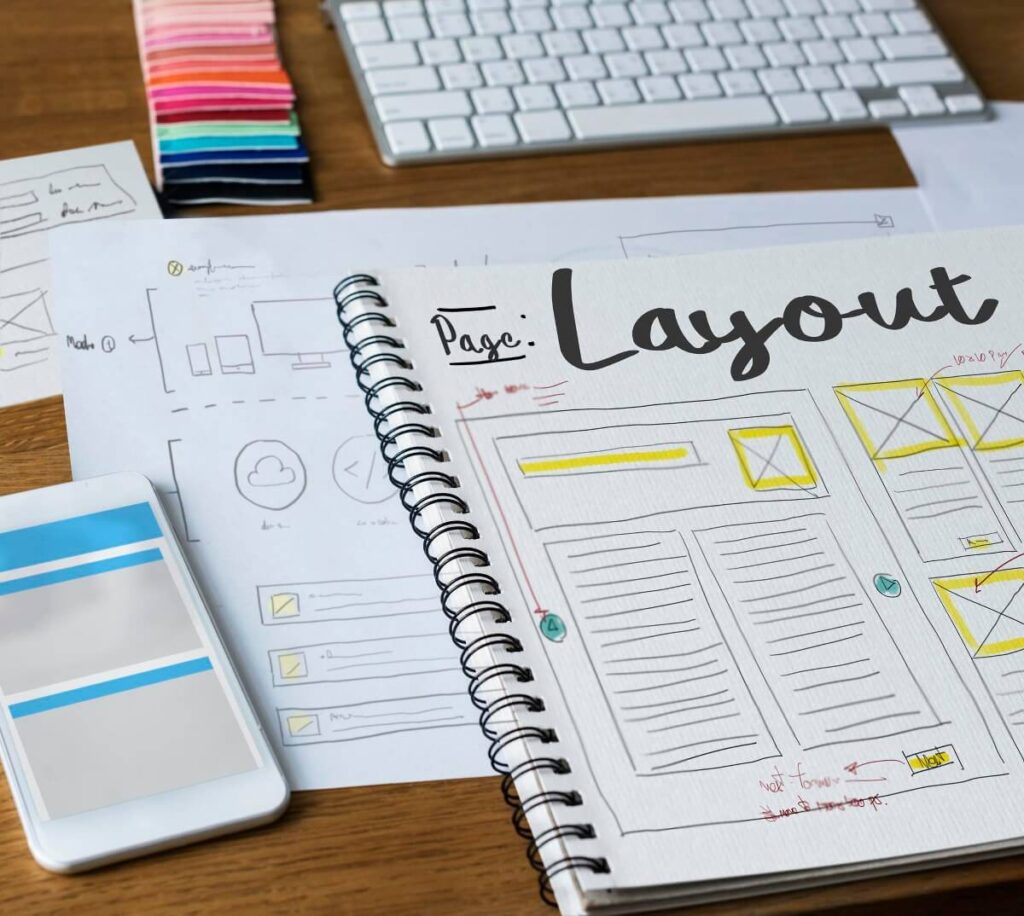UX Design, and why do you need it for your website?
Did you know that simply having a website is not enough? It needs to be user-friendly and engaging in order to be effective. This is where UX (User Experience) Design comes in. Let us to explore why UX Design is important for your website and how it can benefit your business.
So, what is UX Design in general?
UX Design is the process of creating a website or application that is user-friendly, easy to navigate, and enjoyable to use. It involves understanding the needs and expectations of your target audience and designing a website that meets those needs. UX Design also takes into account the aesthetics of the website, ensuring that it is visually appealing and consistent with your brand.

Here are 5 reasons why UX Design is important for your website?
1. Improves User Engagement
One of the primary goals of UX Design is to improve user engagement on your website. By creating a website that is easy to use and navigate, you are encouraging users to spend more time on your site. This increased engagement can lead to more conversions and ultimately more revenue for your business.
2. Boosts Conversions
In addition to improving user engagement, UX Design can also help to boost conversions on your website. By creating a website that is easy to use and navigate, you are making it easier for users to find what they are looking for and take action. This can include signing up for a newsletter, filling out a form, or making a purchase.
3. Enhances Brand Reputation
Your website is often the first point of contact that potential customers have with your brand. If your website is poorly designed and difficult to use, it can create a negative first impression. On the other hand, a well-designed website can enhance your brand reputation and make a positive first impression. This can lead to increased trust and loyalty from your customers.
4. Reduces Bounce Rate
A high bounce rate (the percentage of users who leave your website after viewing only one page) can be a sign that your website is not user-friendly or engaging. By improving the UX Design of your website, you can reduce your bounce rate and keep users on your site for longer periods of time.
5. Increases SEO
Search engines like Google take into account the user experience when ranking websites in search results. This means that a well-designed website with good UX can help to improve your search engine rankings. In addition, a website with good UX is more likely to be shared on social media, which can also help to increase your visibility and drive more traffic to your site.
So with that in mind, you must be wondering:
How to improve UX Design on your website?
Look no further, we have some tips to share:
+Conduct User Research

The first step in improving UX Design on your website is to conduct user research. This involves understanding the needs and expectations of your target audience, including their goals, pain points, and behaviors. By understanding your users, you can design a website that meets their needs and improves their experience.
There are a number of methods you can use to conduct user research, including:
Surveys
Surveys can help you gather information about your users, such as their demographics, interests, and behaviors. You can use online survey tools such as SurveyMonkey or Google Forms to create and distribute surveys.
User Interviews
User interviews involve talking to users one-on-one to gather more detailed information about their needs and experiences. You can conduct interviews in person, over the phone, or through video conferencing tools such as Zoom.
Analytics
Analytics tools such as Google Analytics can provide valuable insights into how users are interacting with your website. You can use analytics to track user behavior, such as how long they are spending on your site, which pages they are visiting, and which pages they are exiting from.
+Simplify Navigation

One of the key elements of good UX Design is simple navigation. Users should be able to easily find what they are looking for without having to click through multiple pages or menus. Simplifying your navigation can improve the user experience and reduce bounce rates.
To simplify your navigation, consider the following tips:
-Use clear and descriptive labels for your navigation links
-Limit the number of links in your main navigation menu
-Use a search bar to help users find specific content on your site
-Use breadcrumb navigation to help users understand where they are on your site
+Optimize Website Speed

Website speed is another important factor in UX Design. Users expect websites to load quickly and will often abandon a site that takes too long to load. Optimizing your website speed can improve the user experience and reduce bounce rates.
To optimize your website speed, consider the following tips:
-Use a content delivery network (CDN) to serve your website content from a server that is geographically closer to the user
-Compress images and videos to reduce file size
-Use a caching plugin to speed up page load times
-Minimize HTTP requests by combining and minimizing CSS and JavaScript files
+Use Visual Hierarchy

Visual hierarchy is the principle of arranging elements on a page in order of importance. By using visual hierarchy, you can guide users through your website and make it easier for them to find what they are looking for. This can improve the user experience and increase conversions.
To use visual hierarchy effectively, consider the following tips:
-Use a clear and consistent layout across all pages of your site
-Use contrasting colors and font sizes to highlight important elements
-Use whitespace to separate elements and make your content easier to read
-Use visual cues such as arrows or icons to guide users through your site
+Test and Iterate

Once you have implemented changes to improve UX Design on your website, it is important to test and iterate. User testing can help you identify any remaining issues with your website and make further improvements.
To test and iterate effectively, consider the following tips:
-Conduct A/B testing to compare different versions of your website and determine which version performs better
-Use heatmaps to identify which areas of your website are receiving the most attention from users
-Solicit feedback from users through surveys or user testing sessions
-Continuously
In conclusion, improving UX Design on your website is crucial for enhancing the user experience and achieving your business goals. By conducting user research, simplifying navigation, optimizing website speed, using visual hierarchy, and testing and iterating, you can create a website that meets the needs and expectations of your target audience.
Don’t hesitate to implement these tips to improve your website’s UX design today. Your users will thank you, and you will see the results in improved engagement and conversions. So, start implementing these tips right away and enjoy a better user experience for your website visitors!
